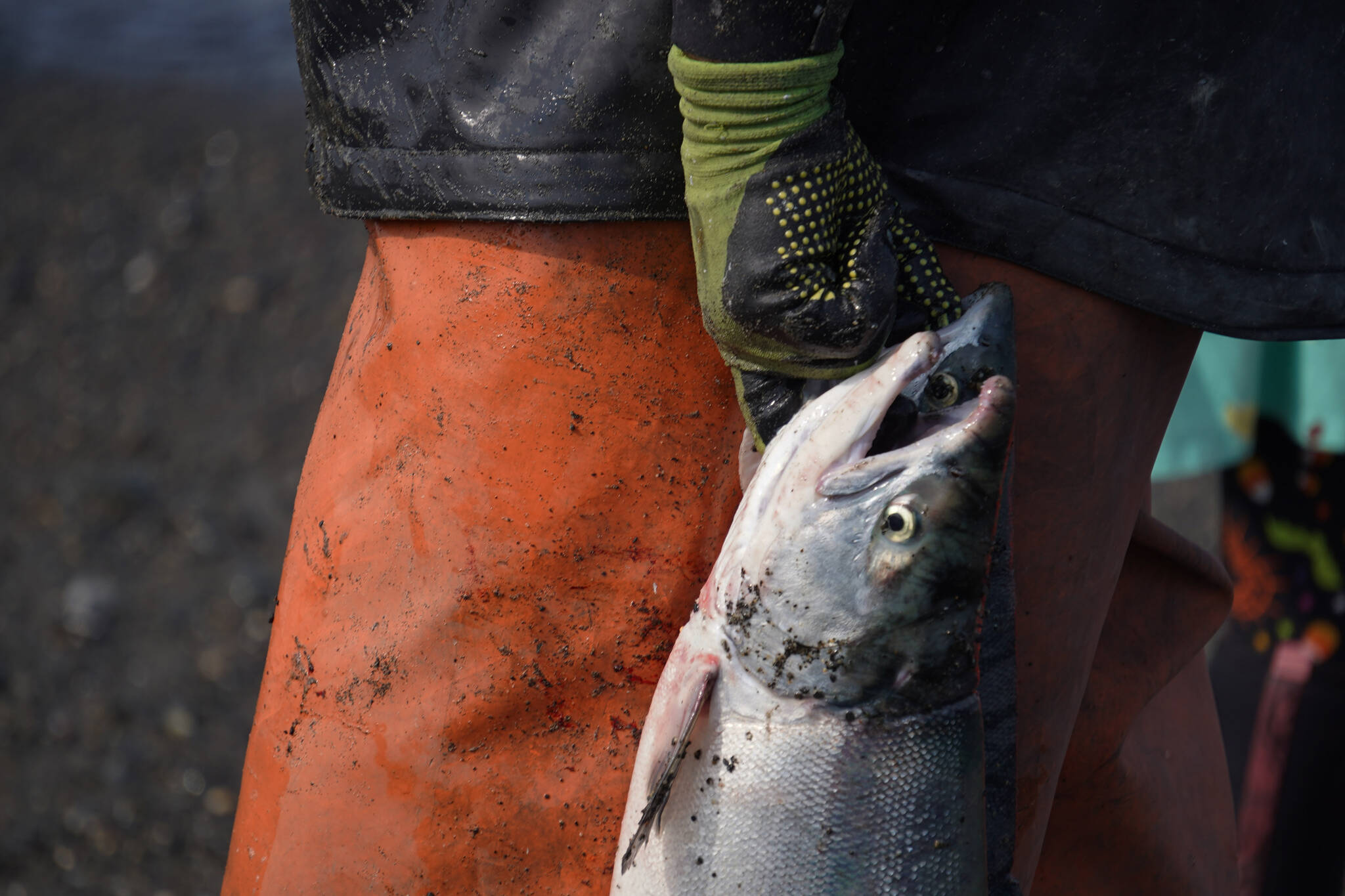Despite granting emergency authorization to dipnets for commercial setnet fisheries in Cook Inlet and even indicating “the commission intends to make the emergency regulation permanent” in that decision, the Commercial Fisheries Entry Commission on Tuesday, June 25, decided not to approve dipnets as a permanent gear type for the fisheries.
Despite this move, the emergency approval will remain effective through the current fishing season before expiring in September.
The meeting comes as the conclusion to a regulatory process to add dipnets to the fisheries that began in May. That process, too, followed approval of dipnets for Cook Inlet commercial fisheries by the State Board of Fisheries in March. The board said that dipnets could be a more selective gear for harvest of sockeye salmon without killing king salmon.
Both the board and the commission needed to approve dipnets before they could be used in the fisheries, and the emergency approval allowed their use in the first opening of the season last weekend.
Commissioner Glenn Haight, in voting down the permanent proposal, said that the emergency regulation will remain active. If people try that fishery and want to have dipnets added as a permanent gear type, he said they should petition the commission again next year with more time to “take a good, hard look at it.”
Several of the concerns raised in public comments received by the commission ahead of Tuesday’s meeting describe issues that Haight said should have been addressed by the Board of Fisheries. Comments received are included with the meeting documents and were submitted by several local fishers, including Gary Hollier, Paul Shadura II, Liz Chase, Brian Koski, Donald Johnson and others.
Rep. Sarah Vance, R-Homer, also submitted a letter calling for regulatory changes allowing the East Side Setnet fishery to operate with their set gillnets to harvest abundant sockeye without “adversely impacting the mortality” of king salmon.
Some of the issues described in the comments, Haight said, include safety, efficiency, viability and cost. “A lot of these” are the purview of the board, “not so much” the commission. Haight said he wanted to see those issues brought back before the board.
“There’s a lot of things that weren’t considered that we’ve been exposed to in this comment process that really should have been given to the Board of Fish,” he said. “I’m going to put it back in their court, hope that they do something with it if they truly want it to become permanent.”
A major concern raised in public comment was the safety of dipnetting from a boat in the waters of Cook Inlet. Any fishery can be dangerous, Haight said, but having seen one operation on the Kenai Peninsula, he thought those concerns were well founded.
Other concerns included the details of the board’s regulation, which doesn’t allow people to stack permits. In the commercial setnet fisheries, one person can hold multiple permits and fish them simultaneously. The new regulation instead limits fishers to four nets “per permit holder,” rather than “per permit.” Similarly, the board’s regulation includes a specific mesh size restriction that differs from other dipnets being used in local waters.
On both of those issues, Haight said he recommended that people create an emergency petition to the board to seek those changes — “unclear if that will happen.”
Haight said he agreed with comments that said that the use of dipnets in the commercial fisheries should have been first explored in a test fishery. Dipnetting usually happens in rivers where fish are “funneled” in, and the harvest rates will be “much poorer” on sites farther from the river mouths.
Another possible problem, Haight said, is an opportunity for conflict or overcrowding on commercial sites, because the regulation for state fishery leases specifies set gillnet fishing — he checked with the Department of Natural Resources, who said their understanding is that leases would not be effective if people are using dipnets.
“That means that if you have a lease site there, anyone can fish on your lease site with a dipnet,” he said. “That deserves some review and attention.”
Haight said that he supported the emergency approval because people were interested in trying the gear type. Looking now at all the comments, “it makes a lot of sense that this is going to be a fishery that may not make money.”
“They’re going to have a fraction of the gear they would normally,” he said. “We need to be able to show that it’s going to make for an economically healthy fishery. We don’t even know if dipnets can harvest a reasonable amount of product and what the cost will be.”
Haight said the commission would be happy to take another look at dipnets, happy to receive another petition and respond to it.
For more information about the Board of Fisheries, including proposals, reports and audio from the Upper Cook Inlet Finfish meeting, visit adfg.alaska.gov. For more information about the Commercial Fisheries Entry Commission, including the proposed emergency regulation, visit cfec.state.ak.us.
Reach reporter Jake Dye at jacob.dye@peninsulaclarion.com.


